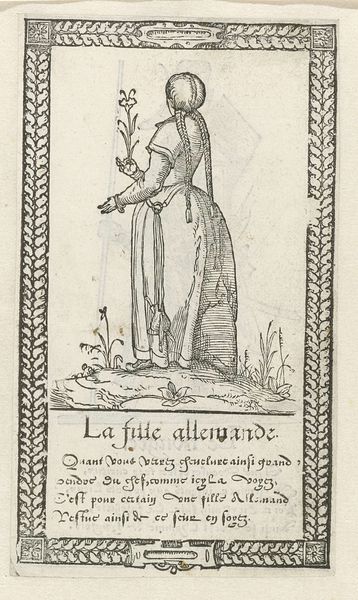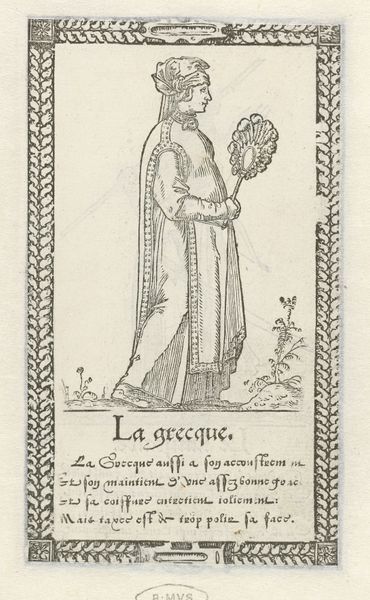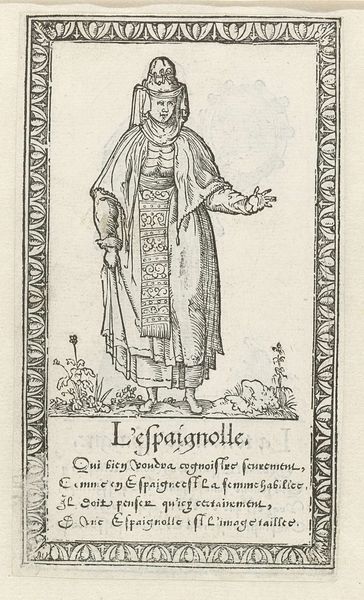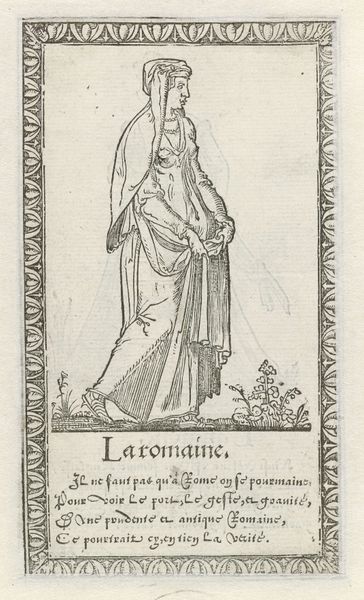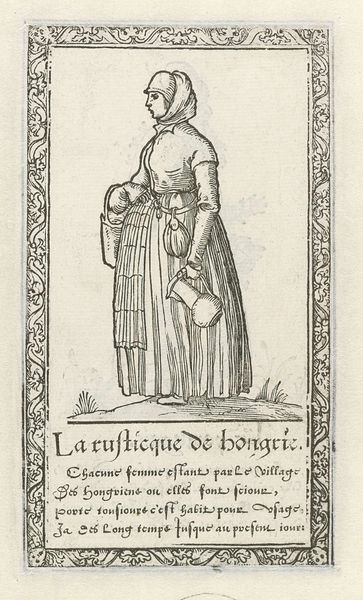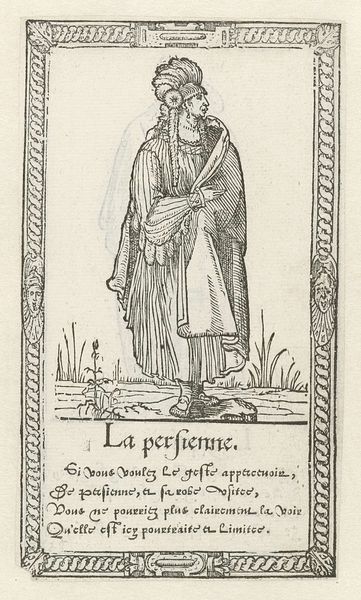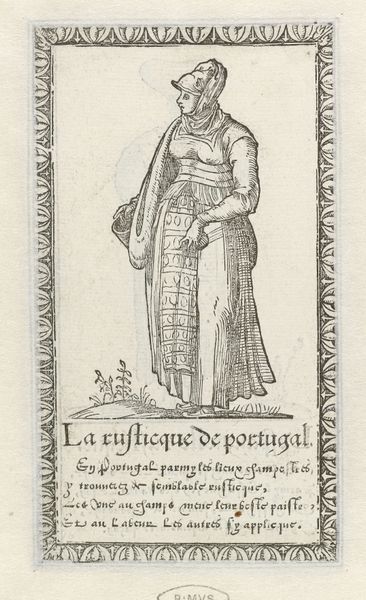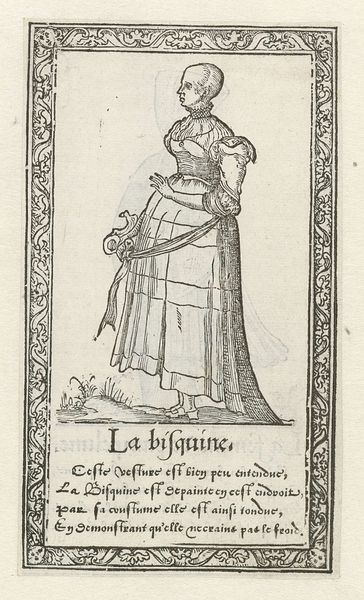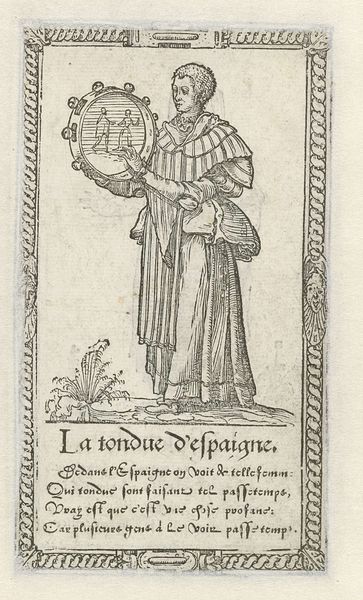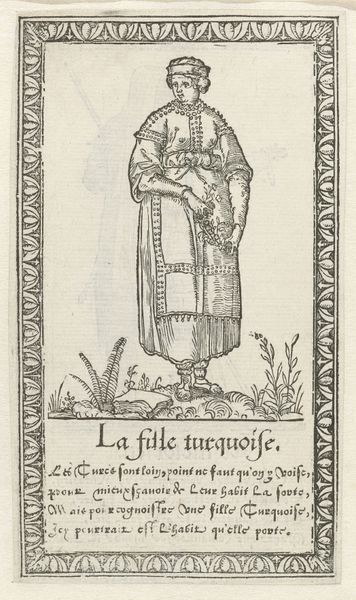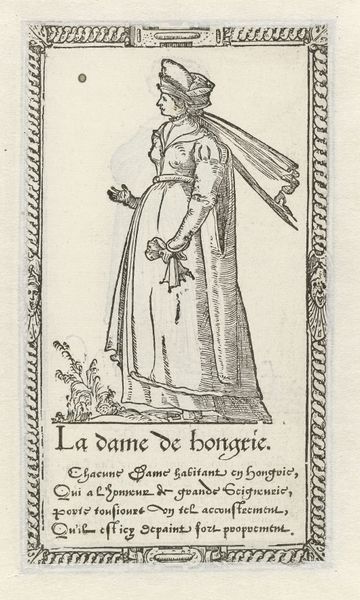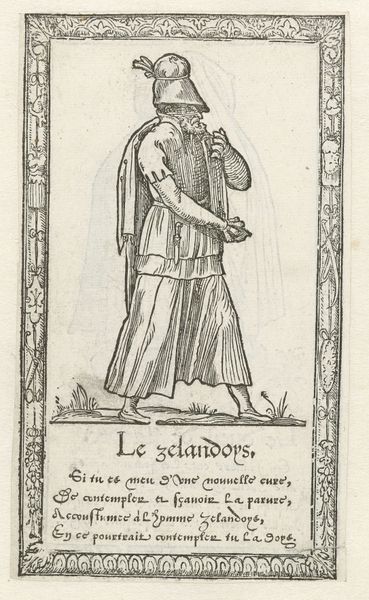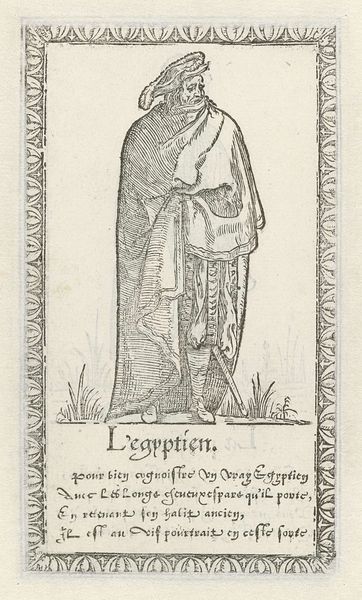
print, engraving
#
portrait
#
medieval
# print
#
figuration
#
northern-renaissance
#
engraving
Dimensions: height 146 mm, width 87 mm
Copyright: Rijks Museum: Open Domain
Curator: Looking at this engraving, "Kartuizer Monnik" by François Desprez, dated 1562, what strikes you immediately? Editor: There's a stillness to it, isn’t there? A contemplative, almost fragile presence rendered in very stark, definite lines. The monk's hands seem raised in either supplication or perhaps a delicate balance. Curator: I see what you mean. Contextually, Desprez created this during a period of intense religious upheaval. The image's circulation would have contributed to wider understandings of monastic life within shifting societal structures. Consider how images like these functioned almost as ethnographies, documenting a specific social role. Editor: Interesting. To me, though, it feels more personal, a glimpse into interiority despite its formal representation. The way the hatching defines the drapery creates this sense of weight, a heavy burden perhaps, or the gravitas of faith itself. I think that is in opposition with the almost nonchalant herb sprouting on the left-hand side of the print. What are your views? Curator: Precisely. The plant may be there to act as a silent witness in some respects. The depiction can function in the broader debates around spirituality and earthly devotion. Note how the print, itself a readily distributable format, might democratize access to the symbolic language once confined to religious spaces. Editor: It brings up questions about representation, doesn’t it? Is this monk a figure of piety, of power, or something more ambiguous? It certainly has echoes of modern portrayals where the self or personality is suppressed to emphasize function. I get a sense of the subject struggling with identity here; this depiction speaks more to the individual than to a representative type. Curator: Well, I think this reading resonates strongly with how contemporary art and theory now grapple with these same questions of representation and visibility within systems of power. What could a piece such as this do to help society reflect and learn, even now, several centuries on? Editor: Yes, it's an enduring testament to the fact that people of all kinds and eras go through crises and struggle with faith. Thanks to this piece, there is more to ponder!
Comments
No comments
Be the first to comment and join the conversation on the ultimate creative platform.
